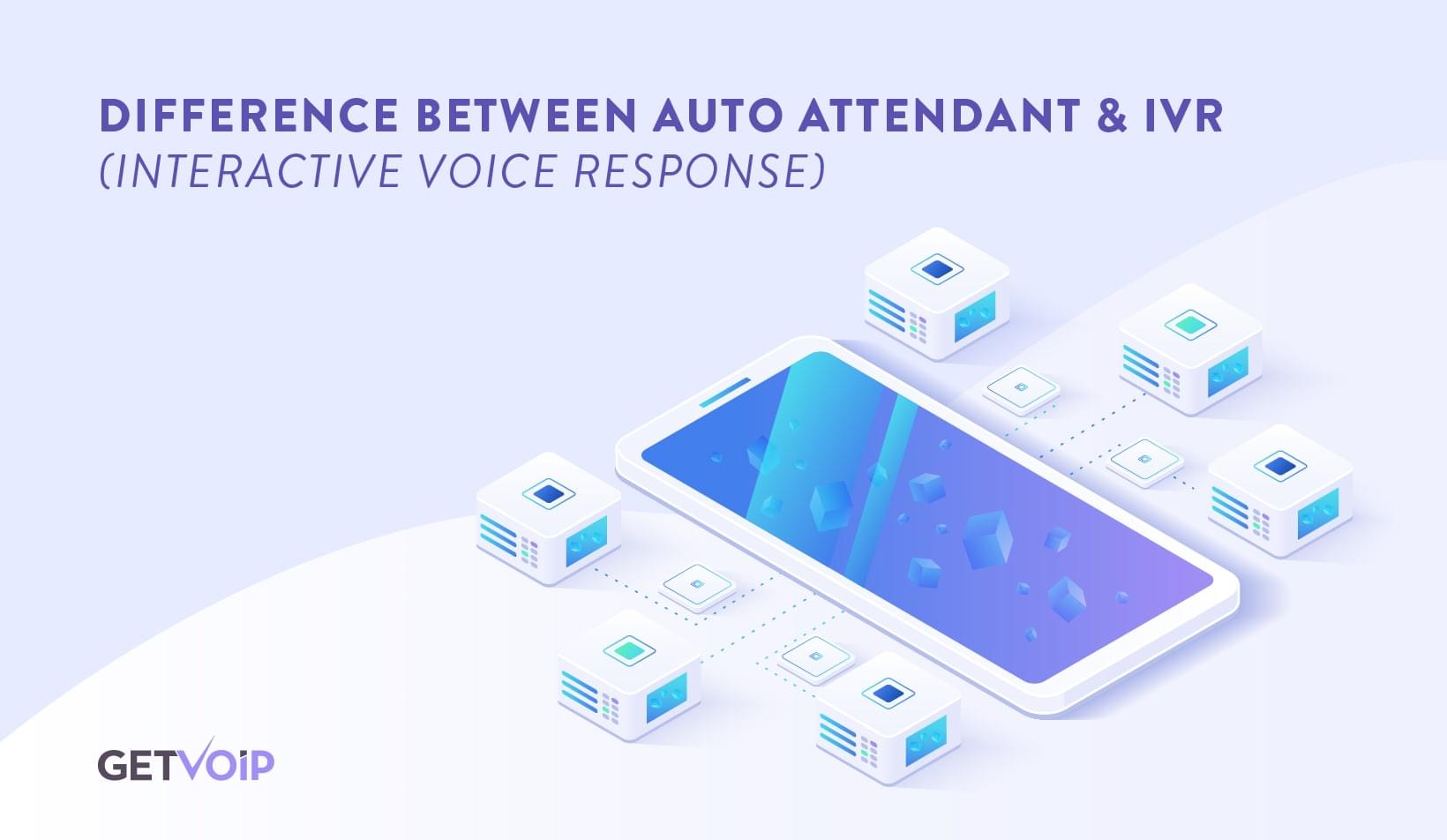An automated attendant (aka phone trees, auto-attendant, auto-receptionist, virtual receptionist, et al) routes incoming calls to the correct agent or extension. An auto-attendant is “dumb,” in the sense that all it can do is route calls. The auto-attendant can have many different parameters (such as day/night mode), but a call’s final destination is a call queue or a mail box. An auto-attendant also plays hold/connect music while it hunts.
An IVR (Interactive Voice Response) is a more advanced version of an auto attendant. The “voice response” actually has nothing to do with voice recognition software-some have it others don’t-and instead has to do with the input and the response. An IVR is great for handling automated tasks that involve numbers and simple yes/no answers. For example, if you call your credit card company, you can pay by phone by entering the numbers in your checking account. Or you might follow up a tech support call with a survey, on a scale of 1-5, of how well your call went. Although some people claim to dislike IVRs, they save companies money and shorten call queues by handling simple interactions. An IVR can take Caller ID info, and integrate it with other stored information. For example, a pizza delivery place can identify you by your number, and say “press one if you would like the same order as last time sent to your address.” By the time the caller hears “press two if you would like to make a different order,” the pizza is on its way.
A Dial-by-Name Directory is a type of auto-attendant. If a caller does not know your extension, he can look you up using your name. You dial the three digits that have the letters on the digits, usually just the first three. So “Bill Johnson” would be “2-4-5” for “B-I-L.” The auto attendant would then confirm the name (either by a recording or a text-to-speech), and connect you. Unless you program it otherwise, your extension is not the first three digits of your name. Having a dial-by-name directory, in addition to its practical value, is seen by some as a status symbol.
Finally, a receptionist is a person. In the context specifically of answering phones, a receptionist once had the job of routing calls. Today, a receptionist usually routes the calls only for select VIPs, as other calls are handled by the auto-attendant or IVR. A receptionist, being the last gatekeeper, has the important responsibility of making sure calls that go to said VIPs are worth their time. Some business VoIP service providers have software that makes it easy to handle multiple calls with a graphical user interface. The GUI makes it easy for the receptionist to monitor call flow with colors for different call stages (e.g. agent busy, call on hold, transferring). A receptionist can also use the GUI to transfer a call directly to a person or voice mail box without putting the caller on hold. As technologies such as VoIP change the way calls are handled, it is becoming common for a receptionist to be able to do the job off-site.
Additional Reading
Auto-Attendants: Maintenance Tips & Best Practices
What is Conversational IVR and Why Businesses Should Care
9 Ways to Get the Most Out of Your Auto Attendant and Virtual Extension






![What is Omnichannel Customer Service? [Benefits & Tips] What is Omnichannel Customer Service? [Benefits & Tips]](images/omni-channel-explained-350x203.png)

